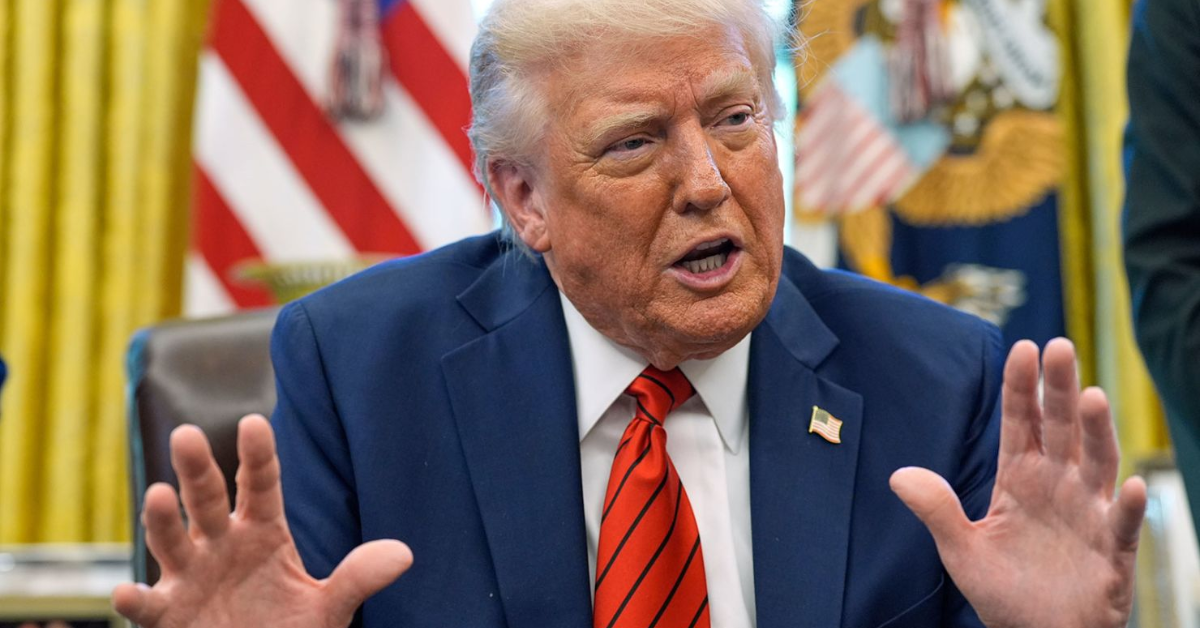Over the past week, former President Donald Trump has made several misleading claims about the prices of gas, groceries, and eggs. His statements have sparked confusion and concern, particularly as he attempts to downplay the effects of his administration’s tariffs on inflation. Let’s dive deeper into his claims and examine whether they hold up against actual data.
Gas Prices: Misleading Numbers
On Thursday, Trump claimed that gas prices “hit $1.98 yesterday in a couple of states.” According to this claim, prices in some states had dropped to levels not seen in years. However, this statement is completely false.
Data from AAA, which tracks national gas prices, shows that no state had an average price below $2.70 per gallon on Wednesday. The national average price of gas was approximately $3.17 per gallon, significantly higher than the $1.98 figure that Trump mentioned. Even GasBuddy, which tracks prices at thousands of gas stations across the country, found the lowest price in Texas at $2.19 per gallon.
When CNN reached out to the White House for confirmation of Trump’s statement, they couldn’t substantiate the claim. Instead, the White House added a new false statement, claiming that gas prices were at “record lows” in “Middle America.” However, the data did not support this assertion.
The following day, Trump reiterated his claim, stating that three states had reached $1.98 per gallon. Once again, the facts did not align with his claims, as the lowest average price on Thursday was still around $2.70 per gallon, with no stations selling for less than $2.19.
Grocery Prices: The Reality of Rising Costs
Trump has also claimed that grocery prices have “come down” or are “down significantly.” According to him, food prices have been decreasing in recent months. However, upon examining the facts, his claims do not hold up.
In March, the average grocery prices actually saw a 0.49% increase from February, marking the largest month-to-month rise since October 2022. Furthermore, grocery prices increased by about 2.41% compared to the Same Month of the previous year.

This was the highest year-over-year increase since August 2023. These increases were seen before Trump imposed a 10% tariff on imports from most countries in early April. The tariffs are expected to increase grocery prices further in the future.
The fact is that grocery prices have been rising for several months, and Trump’s claims about their decline are simply not accurate. Consumers are facing higher costs, not lower ones, despite the former president’s repeated statements to the contrary.
Egg Prices: An Overblown Claim
Perhaps the most egregious claim made by Trump was regarding the price of eggs. On Tuesday, Trump claimed, “as you know, the cost of eggs has come down like 93, 94% since we took office.” This is not just an exaggeration — it is a flat-out falsehood.
In January, the average cost of a dozen large Grade A eggs was about $4.95. If egg prices had really fallen by 93% or 94%, as Trump suggested, that would mean eggs would now cost under 38 cents per dozen. Anyone who has gone grocery shopping recently can tell you that this is far from true. In fact, in March, the national average price for a dozen eggs reached a record high of $6.23.
It is essential to note that while wholesale egg prices have decreased since late February, these are not the prices consumers pay in stores. As of the latest available data, the wholesale price for a dozen large white eggs was $3.13, down from $6.55 in January. That’s a drop of about 52%, not 93% or 94%, as Trump claimed.
The White House has previously pointed to wholesale prices as evidence of price reductions, but even these wholesale figures do not support Trump’s statements. While it’s true that prices have fallen from their January highs, they remain far above where Trump suggested they should be.
When CNN asked the White House to provide evidence for Trump’s 93% claim, they could not provide any substantiation. Instead, White House spokesperson Anna Kelly pointed to Trump’s efforts to combat bird flu as the reason for the decline in egg prices. However, this explanation does not account for the actual data, which shows a far smaller price drop than Trump had claimed.
Why These Claims Matter
Trump’s statements about gas, grocery, and egg prices are part of a broader narrative in which he tries to minimize the effects of his administration’s policies on inflation. By making these false claims, he seeks to distract from the reality that tariffs and other policy decisions may have contributed to rising costs for everyday Americans.
Inflation is a real concern for many people, especially those living paycheck to paycheck. The rising cost of living has made it harder for families to make ends meet. By downplaying these issues or offering false explanations, Trump risks undermining efforts to address the root causes of inflation and improve the economy for everyone.
Conclusion
In today’s political climate, it’s more important than ever to fact-check the claims made by public figures. Trump’s recent statements about gas, grocery, and egg prices are prime examples of how misinformation can spread and shape public perceptions.
While there may be fluctuations in prices from month to month, the facts do not support Trump’s claims. Gas prices remain well above the $1.98 per gallon mark, grocery prices continue to rise, and egg prices have not dropped anywhere near the 93% that Trump suggested.
It is essential for consumers to rely on accurate information and avoid being misled by political statements that do not align with the facts. As we move forward, we must continue to hold public figures accountable for the information they provide to the public.
Disclaimer: This article has been meticulously fact-checked by our team to ensure accuracy and uphold transparency. We strive to deliver trustworthy and dependable content to our readers.


